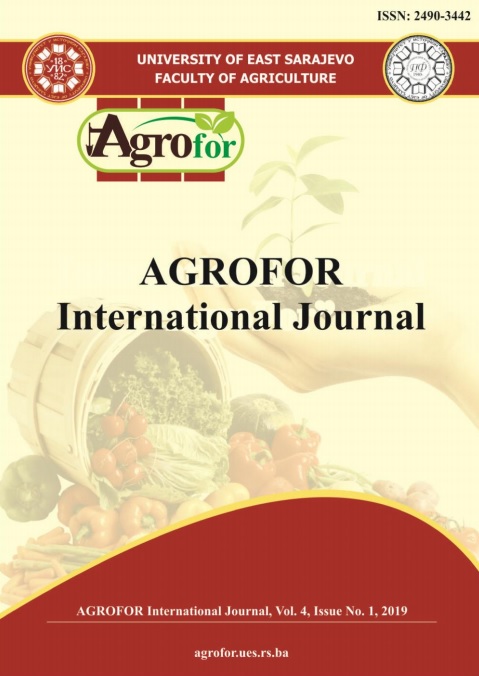SOIL NITRATE AND ORGANIC CARBON IMPROVEMENT BY USE OF LEGUMINOUS PLANTS AS COVER CROPS IN AN ORGANIC OLIVE ORCHARD
DOI:
https://doi.org/10.7251/AGRENG1901041RAbstract
The organic olive orchard represents about 0.5 Mio ha in EU and 36% are located
in Spain. This production system implies an economic opportunity for rural areas.
The use of cover crops between the rows of olive trees is an agricultural practice
that farmers are progressively adopting since they reduce soil erosion while
improve soil quality. Due to an usual fertilisation strategy in organic farming is the
use of leguminous plants, three legumes (Vicia sativa, Vicia ervilia and Vicia
villosa) used as cover crops were compared to study their capacity to protect the
soil and improve soil fertility during 4 years. Two soil managements were
considered after mowing cover crops: plant residues left on surface or incorporated
into the soil. Soil nitrate and coverage were monitored monthly and soil organic
carbon (SOC) was analysed at the end of every growing season. Despite not being
the best species to protect the soil, the coverage at the end of decomposition period
increased by 32% in 4 years in the management without incorporation, providing
values over 30% of cover. The soil nitrate recorded in May, when the demand for
N by the olive tree is greater, increased in the study period by 70% with the
residues left on surface and by 50% when the residues were buried. A carbon
sequestration rate of 1.08 Mg C ha-1 y-1 was reached by V. villosa without
incorporation. Where residues were incorporated, V. sativa obtained the highest
carbon fixation with 1.21 Mg C ha-1 y-1.

